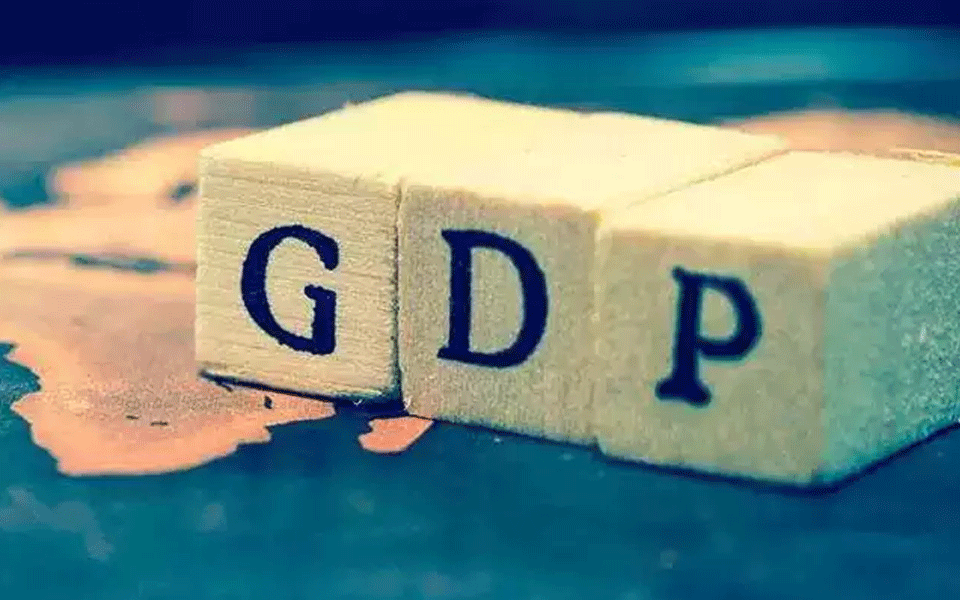Washington: India's GDP growth is expected to accelerate moderately to 7.5 per cent in Fiscal Year 19-20, driven by continued investment strengthening, particularly private-improved export performance and resilient consumption, the World Bank has said.
The real GDP growth is estimated at 7.2 per cent in FY18/19, the World Bank said in its latest report on South Asia on Sunday ahead of the spring meeting of the World Bank and the International Monetary Fund.
Data for the first three quarters suggest that growth has been broad-based. Industrial growth accelerated to 7.9 per cent, making up for a deceleration in services.
Meanwhile, agriculture growth was robust at four per cent.
On the demand side, domestic consumption remained the primary growth driver, but gross fixed capital formation and exports both made growing contributions. Over the last quarter, growth is expected to remain balanced across sectors, the report said.
Inflation dynamics have been subdued over most of FY18/19, the report said.
The World Bank said India's GDP growth is expected to accelerate moderately to 7.5 per cent in FY19/20, driven by continued investment strengthening-particularly private- improved export performance, and resilient consumption.
With robust growth, and food prices poised to recover, inflation is expected to converge toward four per cent, it said, adding that both the current account and the fiscal deficit are expected to narrow.
"On the external front, improvements in India's export performance and low oil prices should bring about a reduction in the current account deficit to 1.9 per cent of GDP," it said.
"On the internal front, the consolidated fiscal deficit is projected to decline, albeit slowly (to 6.2 and 6.0 per cent of GDP in FY19/20 and FY20/21 respectively). As the center's deficit is budgeted to remain unchanged at 3.4 per cent of GDP in FY19/20, the burden of adjustment will rest on the states, the World Bank said.
A sustained decline in food prices since July 2018, subsequently complemented by the softening of oil prices and concomitant appreciation of the rupee, has led to a steady decline in inflation, it noted.
Observing that headline inflation stood at 2.6 per cent in February 2019, and the average for FY18/19 so far at 3.5 per cent, well below the RBI's target-midpoint of four percent, the report said that as a result, the RBI reduced the policy rate by 25 basis points (to 6.25 percent) in February 2019.
However, the report said that the current account deficit widened in FY18-19.
India's external position worsened significantly in the first half of FY18-19, as large portfolio outflows were triggered by US monetary policy and fears of contagion from stress in some emerging market economies. The nominal exchange rate depreciated, and foreign reserves declined by over eight percent over January to October 2018.
However, since then, the decline in oil prices and the United States Fed signaling a slower pace of normalisation than initially anticipated led to a partial reversal.
Portfolio outflows have reversed, and the rupee has appreciated by about four percent vis-a-vis the USD since October 2018.
Let the Truth be known. If you read VB and like VB, please be a VB Supporter and Help us deliver the Truth to one and all.
Panaji (PTI): Saurabh Luthra and Gaurav Luthra, the main accused and owners of the Goa nightclub where a massive blaze claimed 25 lives, fled to Phuket hours after the tragedy, Goa Police said on Monday.
"Goa Police have taken further steps to coordinate with the Interpol Division of the CBI to apprehend both Saurabh and Gaurav Luthra at the earliest," a senior police officer said.
A massive fire at the nightclub, some 25 kilometres away from Panaji, on late Saturday night killed 25 persons. The deceased comprised 20 employees of the nightclub and five tourists, including four from Delhi. Five injured people were undergoing treatment at the government-run Goa Medical College and Hospital (GMCH).
After registering an FIR against them, a Look Out Circular was issued against them by December 7 by the Bureau of Immigration (BOI) at the request of the Goa Police.
The Bureau of Immigration at Mumbai was contacted, and it was found that both the accused had taken the 6E 1073 flight to Phuket at 5.30 am on December 7, immediately after the fire incident, which occurred around midnight, the officer said.
READ ALSO: Goa nightclub fire: Owner Saurabh Luthra expresses grief, assures management support
He said the Goa Police had immediately dispatched a team to Delhi to conduct raids on the addresses of the accused Gaurav and Saurabh Luthra.
"Since they were not available, a notice under the appropriate sections of law was pasted on the gate of their house. This shows their intent to avoid the police investigation", he said.
Goa Police have obtained transit remand of Bharat Kohli, an employee of the club, and are bringing him to Goa.
He also said that the postmortem on all 25 deceased has been completed and bodies handed over to their families.





